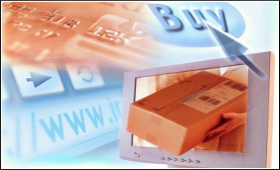|

|
Online retail industry may reach $70 bn by 2020
|
|

|
|
| Top Stories |
 |
|
|
|
Gyanendra Kumar Keshri | 10 Feb, 2014
There is a common saying about the Indian retail consumers' "can't touch, won't buy" mentality. However, this is gradually changingwith the rising trend of online shopping.
Country's e-commerce business jumped by more than 80 percent in 2013 and the momentum is likely to continue for at least the next five-six years, the founders of the country's largest e-commerce firm, Flipkart, say.
Flipkart co-founder and chief executive officer Sachin Bansal said the e-commerce business in India is expected to reach around USD 50-70 billion by 2020 on the back of a fast growing internet-connected population and improvement in related infrastructure like payment and delivery systems.
The size of India's e-commerce market in 2013 was around USD 13 billion, according to a joint report of KPMG and Internet and Mobile Association of India (IAMAI). The online travel segment contributed over 70 percent of the total consumer e-commerce transactions last year.
Bansal said online retail, also known as "e-tail", will lead the industry's growth in the coming years.
"Consumer mentality and shopping patterns are changing very fast. Online shopping is going to become mainstream in the coming five-six years," Bansal told IANS in an interview.
He said smartphones would be the biggest online shopping driver in the coming years.
"Over half a billion Indians will switch to smartphones in the next five-six years. That's going to be a big driver of e-commerce in India," Bansal added.
According to Bansal, online shopping is becoming increasingly popular in smaller cities.
"Tier-II and Tier-III cities are opening up very rapidly. By 2020, you will have e-commerce penetrated everywhere, whether it is smaller cities or rural areas," said Bansal.
Alumni of the Indian Institute of Technology-Delhi, Sachin and Binny Bansal co-founded Flipkart in 2007. They claim the company now controls nearly one-third of India's online retail business and has over 1 crore (10 million) registered users.
"By 2020, our target is to be a USD 20 billion company. We are thinking really big. We are investing a lot on technologies, especially on mobiles and the supply chain," said Binny Bansal.
"We have raised a good amount of funding this year. We are well funded for the foreseeable future. However, we will continue to raise funds as and when required," he said when asked about funding for the company's expansions.
Flipkart has raised nearly USD 550 million since 2009 from venture capitals like Tiger Global, Accel Partners, Iconiq Capital and Naspers Group.
Sachin Bansal emphasised on the need for implementing a uniform goods and services tax (GST) as this would help boost the e-commerce business.
"Right now it's a bit complicated for sellers to ship products across India because taxes vary from state to state and it is also calculated differently. GST will really be a help for the industry," he said.
He pointed out that despite high growth in recent years, India's e-commerce industry is still in a nascent stage. Online shopping accounts for less than one percent of the total shopping in the country. Total global online sales reached USD 1.22 trillion in 2013. In China alone it was around USD 200 billion.
Just around 12 percent of Indian population is into online transactions against more than half of their Chinese counterparts. This proportion is much higher in the developed countries like the US, where the figure is 64 percent.
Internet connectivity and other logistics infrastructure are still a big drag. This makes servicing in smaller towns a bit challenging, said Bansal.
According to the KPMG and IAMAI report, only around 10,000 out of the more than 150,000 pin codes in the country are covered by courier companies. The penetration of courier services is critically important to boost online shopping as deliveries are mostly done through them.
|
|
|
| |
|
|
|
|
|
|
|
|
|
|
|
|
|
|
| |
| Customs Exchange Rates |
| Currency |
Import |
Export |
US Dollar
|
₹88.70
|
₹87 |
UK Pound
|
₹119.90
|
₹116 |
Euro
|
₹104.25
|
₹100.65 |
| Japanese
Yen |
₹59.20 |
₹57.30 |
| As on 30 Oct, 2025 |
|
|
| Daily Poll |
 |
 |
| Who do you think will benefit more from the India - UK FTA in the long run?
|
|
|
|
|
|
| Commented Stories |
 |
|
|
|
|
|
| |
|